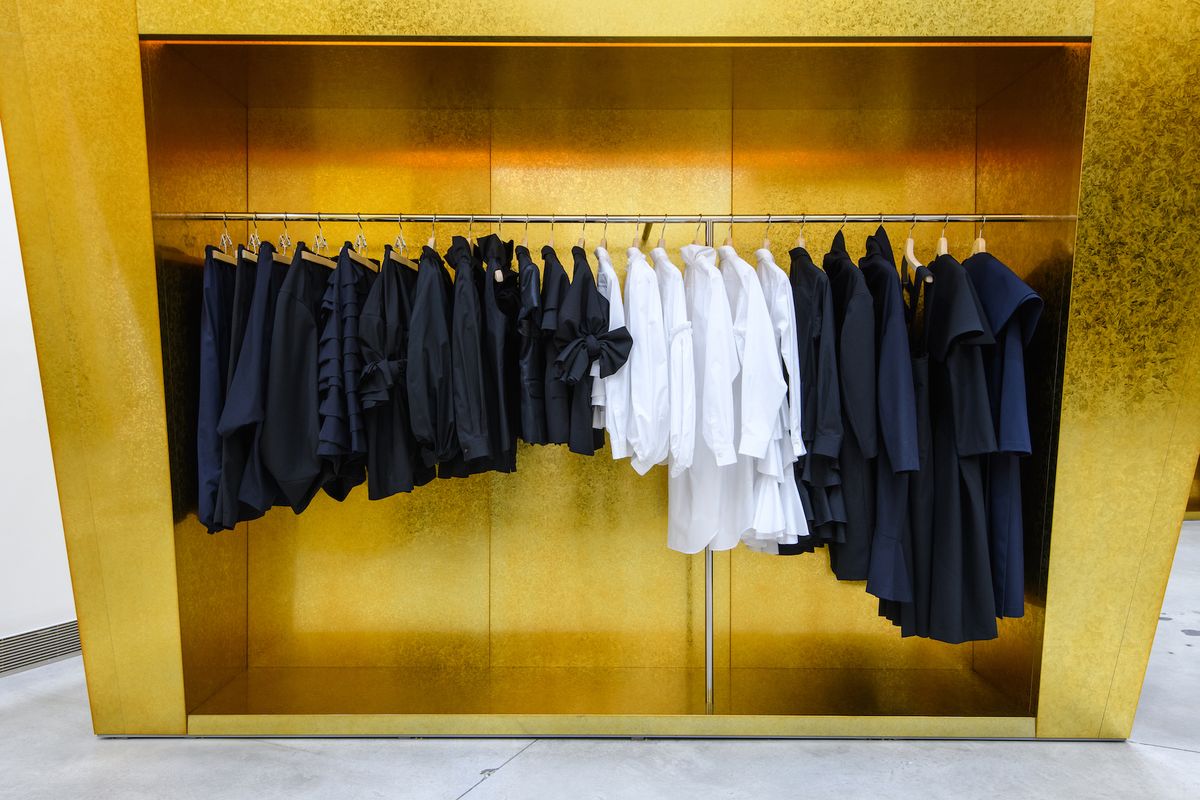Exploring the Development and Influence of Clothes on Modern Style Trends
The advancement of apparel has actually dramatically affected modern-day style fads, combining historical precedents with innovative advancements. Renowned figures like Coco Chanel and Yves Saint Laurent transformed the style sector by introducing principles that focus on convenience and availability, which continue to resonate today.
Historic Fashion Influencers
In the tapestry of fashion history, particular numbers have left an indelible mark, forming the patterns and designs that define whole ages. Coco Chanel, a cutting edge developer, redefined women's style by presenting comfortable, elegant clothing that left from restrictive corsets. Her legendary Chanel fit and little black dress have actually ended up being timeless staples in closets worldwide. Similarly, Christian Dior's post-war "New Look" in 1947, with its party of womanhood through complete skirts and cinched midsections, noted a return to opulence and has actually remained to affect developers.
Elsa Schiaparelli is an additional critical number, renowned for her avant-garde layouts that incorporated surrealist art, working together with Salvador Dalí to create whimsical items that challenged traditional visual appeals. Her innovative use shade and bold patterns reverberates in contemporary style. Yves Saint Laurent, meanwhile, equalized haute couture with prêt-à-porter collections, bringing runway styles to the masses and establishing a criterion for modern ready-to-wear lines.
These enthusiasts, to name a few, not only transformed style in their times yet likewise established sustaining trends that resonate in today's garment industry, supplying a foundation upon which contemporary developers remain to innovate and build. Their traditions emphasize the relevance of creative thinking and daring in fashion's ever-evolving narrative.
Technological Innovations in Style
Amidst the dynamic landscape of the fashion industry, technological improvements stand at the center of innovation, reshaping how designers create and customers involve with style. The integration of 3D printing has revolutionized design processes, enabling developers to experiment with complex frameworks and lasting products that were formerly unthinkable. This innovation assists in fast prototyping, decreasing waste and accelerating production times.

Smart fabrics, embedding modern technology into materials, are also changing the sector. Developments like self-cleaning and temperature-regulating materials supply enhanced performance and convenience. Wearable technology, integrating attributes like physical fitness monitoring and communication, adds a brand-new measurement to fashion, merging visual appeals with usefulness.
Social Changes and Design
As technical advancements remain to reshape the fashion business, cultural shifts are just as significant, redefining style and customer choices. In the last few years, the rise of social media platforms has accelerated the dissemination of worldwide fashion fads, permitting varied social influences to merge and coexist. This digital interconnectivity has actually facilitated the rapid exchange of concepts, bring about a more comprehensive and diverse interpretation of design that shows the diverse nature of modern society.
Social recognition and admiration have actually prompted designers to attract ideas from a wider spectrum of historic and ethnic contexts, incorporating standard motifs with modern looks. This combination has resulted in style that resonates with a bigger target market, promoting a feeling of identification and belonging across various demographics. Additionally, the raising demand for personalization has actually driven brands to company website offer personalized choices, enabling customers to reveal individuality while reflecting their social heritage.
Furthermore, changing societal values have actually impacted style, with inclusivity and diversity coming to be central motifs. The market has started to embrace designs and influencers of various physique, ethnic backgrounds, and gender identifications, challenging standard appeal standards. This improvement highlights the power of social shifts fit the future of fashion, as design becomes an extra authentic expression of cumulative and personal identity.
Sustainability and Modern Layout
While the style sector continues to develop, the critical for sustainability has actually come to be increasingly immediate, affecting modern-day layout techniques. The increase of sluggish style, which emphasizes quality over quantity, encourages consumers to invest in timeless items instead than short-term patterns.
In addition, contemporary design is identified by its technology in decreasing waste and promoting circularity. This approach not just alleviates environmental influence however also improves the social responsibility of style homes.

Future Trends in Style
:no_upscale()/cdn.vox-cdn.com/uploads/chorus_image/image/62476024/DrielyS-4990.0.0.0.jpg)
Sustainability will remain to be a driving pressure in shaping future style patterns. The industry is significantly adopting environmentally friendly products and honest production techniques, responding to an expanding consumer need for accountable practices. Technologies such as bio-fabricated materials and closed-loop recycling systems are established to redefine exactly how apparel is created and eaten, minimizing environmental effect while keeping style and quality.
Social shifts, including the surge of inclusivity and diversity, will certainly also play a crucial role. As culture becomes a lot more familiar with social problems, style is expected to end up being a visit platform for expression and modification. Developers will likely concentrate on producing collections that mirror a broader variety of experiences and identifications, promoting representation and availability.
Conclusion
The advancement of clothing significantly influences modern fashion fads, where historic impacts combine with contemporary designs. This ongoing evolution underscores fashion's duty as a mirror to social worths and technical innovation, recommending a future abundant with advancement and inclusivity.
The development of clothes has significantly influenced modern-day style patterns, merging link historical criteria with innovative advancements.In the middle of the dynamic landscape of the fashion industry, technical improvements stand at the leading edge of development, reshaping how developers produce and consumers involve with style.While the fashion sector proceeds to advance, the essential for sustainability has actually become progressively urgent, influencing modern-day style practices. As sustainability comes to be embedded in modern style, it paves the means for a much more responsible and conscious style market.
The evolution of apparel substantially impacts contemporary fashion patterns, where historical impacts combine with contemporary layouts.